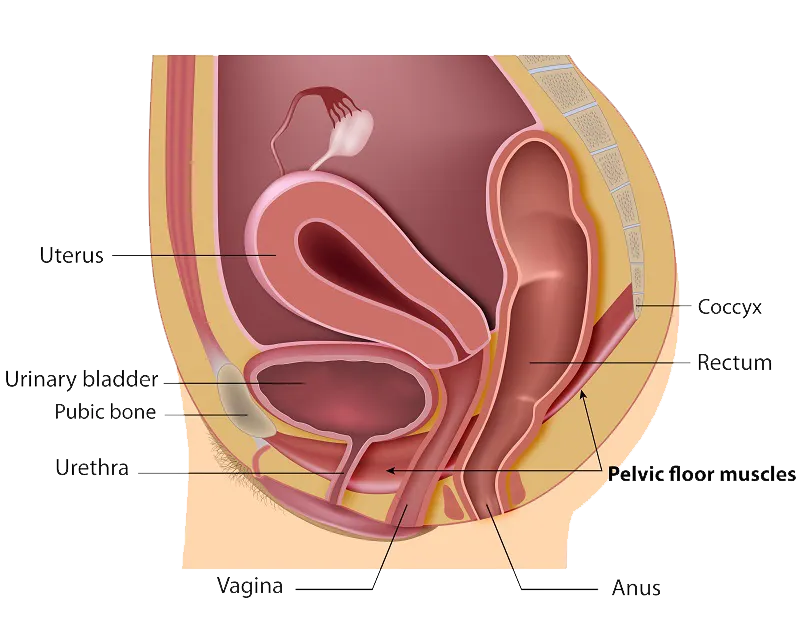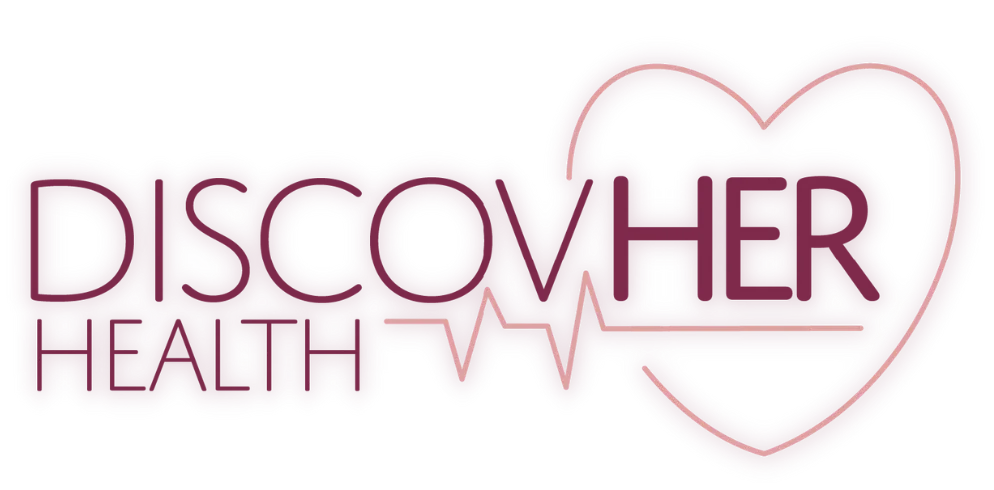Here at DiscovHER HEALTH, we care about
treating woman with PELVIC FLOOR DYSFUNCTION.
While the cause of PFD is not always known contributing factors may include pregnancy, vaginal delivery, pelvic trauma, stress, pelvic surgery and obesity.
Here at DiscovHER HEALTH, we care about
treating woman with PELVIC FLOOR DYSFUNCTION.
While the cause of PFD is not always known contributing factors may include pregnancy, vaginal delivery, pelvic trauma, pelvic surgery and obesity.
What is Pelvic Floor Dysfunction?
The pelvic floor is made up of the bony pelvis (hip bones) together with different layers of muscles, fascia, and
ligaments. The pelvic floor acts like a hammock to support the pelvic organs including the uterus, bladder, and rectum. If the muscles become overactive, strained or uncoordinated, they may cause pain in the pelvis. This pain may lead the muscles to not contract, relax, or work together.

What is Pelvic Floor Dysfunction?
The pelvic floor is made up of the bony pelvis (hip bones) together with different layers of muscles, fascia, and
ligaments. The pelvic floor acts like a hammock to support the pelvic organs including the uterus, bladder, and rectum. If the muscles become overactive, strained or uncoordinated, they may cause pain in the pelvis. This pain may lead the muscles to not contract, relax, or work together.

PFD is also frequently found alongside pelvic diseases such as endometriosis, bladder pain syndrome, irritable bowel syndrome, overactive bladder, and vulvar pain. PFD may also arise due to repeated straining (such as with bowel movements) leading to poor coordination of the pelvic floor muscles. The pelvic floor muscles may also be involved in compensating for other musculoskeletal conditions, such as low back or hip pain.
PFD is also frequently found alongside pelvic diseases such as endometriosis, bladder pain syndrome, irritable bowel syndrome and vulvar pain. PFD may also arise due to repeated straining (such as with bowel movements) leading to poor coordination of the pelvic floor muscles. The pelvic floor muscles may also be involved in compensating for other musculoskeletal conditions, such as low back or hip pain.
Symptoms of Pelvic Floor Dysfunction
Pain in the lower abdomen and pelvic region with sitting, urination, or bowel movements
A sensation of vaginal heaviness or pressure
Pain with penetration
Low back and hip pain that cannot be explained by other reasons.
Symptoms of Pelvic Floor Dysfunction
Pain of the lower abdomen and pelvic region
A sensation of vaginal heaviness or pressure
Pain with vaginal penetration
Low back pain that cannot be explained by other reasons.
Physical Therapy is performed by a physical therapist who has been specifically trained in pelvic health. The physical therapist will perform a complete initial evaluation and, together with the patient, will establish goals and develop an individualized treatment plan.
Q-Tip Test
A q-tip test (also called a cotton swab test) is done to diagnose vulvodynia. No speculum is required!
Your health care provider may feel that other tests are necessary; these could include swabs to rule out infections or a biopsy to exclude skin conditions.
Learn More About the Q-Tip/ Cotton Swab Test
Physical Therapy is performed by a physical therapist who has been specifically trained in pelvic health. The physical therapist will perform a complete initial evaluation and, together with the patient, will establish goals and develop an individualized treatment plan.
Help Guide On Pelvic Floor Dysfunction
Get A Free Guide to Learn More about Pelvic Floor Dysfunction
The treatment plan may include patient education, red light therapy, manual therapy, therapeutic exercise, postural training, breathing exercises, neuromuscular reeducation (teaching how to improve pelvic floor muscle control including relaxation, contraction, and coordination), biofeedback, and home exercise program.
The treatment plan may include patient education, manual therapy, therapeutic exercise, postural training, breathing exercises, neuromuscular reeducation (teaching how to improve pelvic floor muscle control including relaxation, contraction, and coordination), biofeedback, and home exercise program.
See ONE OF OUR EXPERTS if you have any of the problems with this condition.
The recommended treatment will depend on the your symptoms and your overall health.
To make the best decision for you, discuss the risks and benefits with us.
DiscovHER Our Podcast:
Tune in to our enlightening episodes as we shed light on a wide range of topics from sexual wellness to financial wholeness. With the guidance of top professionals and the support of an inclusive community, we're here to help you reclaim your health, confidence, and happiness and show up as your BEST self.
See JENNA if you have any of the problems with this condition.
The recommended treatment will depend on the your symptoms and your overall health.
To make the best decision for you, discuss the risks and benefits with us.
DiscovHER Our Podcast:
Tune in to our enlightening episodes as we shed light on a wide range of topics from sexual wellness to financial wholeness. With the guidance of top professionals and the support of an inclusive community, we're here to help you reclaim your health, confidence, and happiness and show up as your BEST self.
Apple Podcast :
Spotify:
Youtube:




